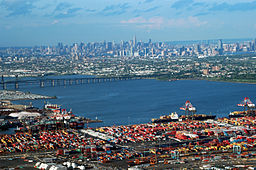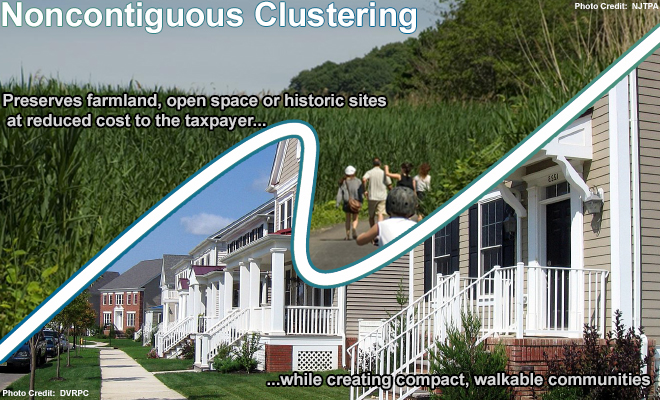New Jersey Future Blog
State Strategic Plan Recognizes Importance of Ports to NJ’s Economy
September 12th, 2012 by Tim Evans
This New York Times article reminds us once again of the importance of ports to New Jersey’s economy, both the Port of Newark/Elizabeth in the north (which accounts for the bulk of the total traffic of the more broadly-defined Port of New York/New Jersey, the nation’s third-busiest (pdf) ) and the smaller Delaware River ports in and around Philadelphia in the south.
Ports – constrained as they are to be located in specific places, namely at the water’s edge in natural harbors – have land-use needs that are not easily displaced to other locations: staging areas for loading and unloading of ships, rail storage yards, rail/truck transloading facilities, short-term warehousing. In many cases, expanding a port necessarily means building on land that is immediately adjacent to the existing facility. These ties to specific geographic locations distinguish port-related businesses from most other types of commercial development, especially office functions that can more or less be located anywhere. An expanding port doesn’t just need new land – it needs specific parcels of new land.
To its credit, the New Jersey State Strategic Plan (pdf), which articulates a vision for future physical and economic development in the state, makes repeated references to the ports and their attendant goods-distribution functions. In its section on page 9 on “Prosperous Industry Clusters,” the plan rattles off some statistics about New Jersey’s goods movement sector:
Transportation, Warehousing & Logistics – New Jersey moves the goods and services for the world and has:
- 23,000+ establishments involved in transportation, logistics and distribution
- The highest density of railroads in the nation
- More than 585 million square feet of warehousing space
- Close proximity to the national market with extensive warehousing and distribution capabilities providing access to the world
- Major port facilities in Newark and Elizabeth, and on the Delaware River, in Camden, Gloucester and Salem; more than 620 million tons of freight—valued at over $850 billion—moves through State ports annually
- 2 major international airports (Newark-Liberty and Atlantic City)
- 3 major interstate highways, 38,000+ miles of roadways and a highway system that connects ports of entry to intra- and inter-state markets
The ports and the goods distribution industry make appearances in the plan’s recommendations section, too, with ports being cited (on p. 22) as being among the preferred locations for fostering “Priority Industry Clusters” in the future; with a reference on p. 23 to an investment in “the redevelopment of the Port of Paulsboro to enable build-to-suit manufacturing and supply chain facilities that could complement other advanced manufacturing sectors like green energy;” with a call on p. 25 for the Office of Planning Advocacy to “… advocate for legislation that expands protections for farming and port industries;” and with a specific recommendation on p. 27 that ports be among the classes of places designated as “Priority Growth Investment Areas” by the plan and targeted for active facilitation of growth.
The State Strategic Plan and the agency charged with implementing it, the Office of Planning Advocacy, seem well aware of the importance of the ports and the goods movement industry to New Jersey’s economy, and are presumably cognizant of those industries’ unique land-use needs. Hopefully, this awareness will avert any future examples of port-adjacent land being redeveloped for non-port uses, as happened in the late 1990s with the construction of the Jersey Gardens mall near the port in Elizabeth. While the mall served a laudable purpose – giving a much-needed boost to the tax base of a struggling city – it did so on a piece of land for which it may not have been the optimal use. Malls, like offices, can be built on any parcel of land big enough to accommodate their footprints. A port, however, cannot pick up and move inland.


















“Luckily” the water may be moving inland as climate change and sea level rise will likely affect the New Jersey waterline substantially.
The importance of the temporary warehouses near the ports cannot be overlooked. From the bulk of shipped allotments that are to be stored to the consignment that is to be shipped, the temporary storage of the goods is necessary. In such a scenario, building warehouses that are located near the sea while being easily approachable by roads are essential.